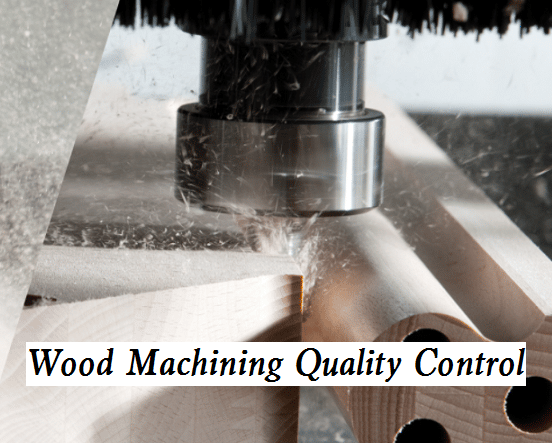Wood is a very important raw material used in different industries, it not only has little environmental pollution but also has biodegradability. Wood machining provides a solution to utilize wood resources. In ancient times, people used simple tools to process wood, in modern society, there are various wood machining and processing methods to manufacture products, such as cutting, milling, grinding, etc. In terms of quality control in manufacturing, how to ensure the high-quality of wood products in the machining process? Follow us to know about how to improve wood cutting quality.

What Factors Affect the Surface Quality of Wood Cutting & Machining?
Wood cutting plays an important role in wood machining, and reasonable cutting technology is conducive to improving the processing quality and production efficiency of wood products. The wood cutting quality is not only a simple requirement of appearance collection shape, texture, color, etc. but also a high requirement of the wood surface quality that is, flatness.
1) Woodworking tools. The sharpness and wear degree of woodworking tools have a great impact on wood cutting. Tools with greater wear will leave tool marks, which will increase the roughness of the wood surface, thus affecting the surface quality of wood cutting. The shape of the wood knife mark depends on the geometric shape of the cutting edge and the motion characteristics during cutting. When the circular saw blade is used for cutting, the wood surface will leave arc knife marks.
2) Machine tool mechanical vibration. The vibration of the machine tool The vibration of the whole system will leave ripples on the wood surface during wood cutting, which is a kind of trace with similar size and regular fluctuations and will increase the surface roughness of wood cutting. When the tool is worn to a certain extent, the cutting force of the tool will increase, which will lead to increased vibration of the tool system. Enterprises must regularly check the tool wear to ensure the role of the tool in the processing process.
3) Uneven wood surface. Destructive wood surface unevenness is caused by the tearing or peeling of wood surface fibers. When the cutting parameters are unreasonable, this kind of unevenness is easy to occur. Especially, the rotary cutting or milling process is easy to cause unevenness in the wood surface. The unevenness of the wood surface with elastic recovery is due to the anisotropy of the wood, that is, the hardness and density of each part of the wood itself will be different. When cutting, the difference in elastic deformation will be formed. After the pressure is released, the different elastic recovery of each part of the wood will form the unevenness of the wood surface.
4) Wood burrs. Wood burrs are bundles or flakes of parent fibers that are not completely separated from the wood processing surface. The formation of burr is related to the internal structure or processing method of wood. Burrs will increase the roughness of the wood cutting surface, thus reducing the quality of the wood cutting surface.
5) Wood moisture content. With the increase of the wood moisture content, the additional moisture outside the wood will increase the friction coefficient of the wood surface, which will not play any role in lubrication while making the woodcutter easier to wear, thus increasing the roughness of the wood surface.
How to Improve the Wood Cutting Quality? – Wood Cutting Quality Control
1) Tool surface treatment technology. Tool surface treatment technology includes coating technology, coating technology, and coating technology. The tool surface infiltration technology can make the tool surface have high hardness, and low friction coefficient, making the tool more resistant to wear and corrosion. The commonly used metals or metal compounds containing elements on the tool surface are boron, vanadium, chromium, nitrogen, etc. Plating technology often uses electroplating to make tools more wear-resistant.
2) Regularly check the tool wear. It is known that tool wear can fundamentally prevent the wood surface cutting quality problems caused by tool wear.
3) Wood texture. The wood texture will affect the surface cutting quality of wood. Each kind of wood has different biological characteristics, and wood has anisotropy. It is necessary to analyze the cutting parameters that are most suitable for a certain wood surface to cut wood.